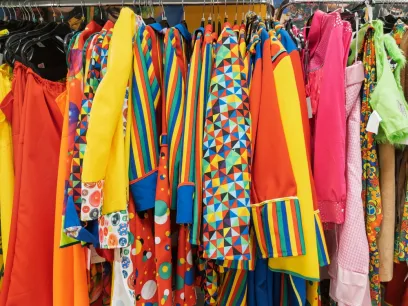Child Safety Around Halloween: Who’s Liable for Costume-Related Injuries?

Key Takeaways
- Halloween costumes are fun but can be dangerous. Flammable fabrics, small detachable parts, obstructed vision, and trip hazards can all lead to serious injuries in children.
- Multiple parties may be liable. Manufacturers, retailers, and event organizers can share responsibility if a costume or Halloween environment causes harm.
- If injured, preserve evidence and seek help immediately. Keep the costume, packaging, and receipts, and get medical attention right away if an injury occurs.
- Families may be entitled to compensation for medical bills, pain, and suffering when injuries result from defective or unsafe costumes, and an experienced attorney can help pursue those claims.
Injured?
Halloween is a night full of magic for kids, full of trick-or-treating, costumes, and other spooky fun.
But beneath the masks and makeup, there can be real hidden dangers that can turn your Halloween into something truly terrifying.
From flammable fabrics to tripping hazards, defective or unsafe costumes have caused injuries that no parent should ever have to face. When that happens, the question becomes: who’s responsible?
At Morgan & Morgan, we love Halloween as much as anyone, but when a child is hurt because of a product that was poorly made or improperly marketed, our attorneys fight to hold negligent manufacturers and sellers accountable.
If your child suffered an injury because of a defective costume, contact us today for a free case evaluation to learn more about your legal options.
Common Costume Dangers Parents Should Watch Out For
Many costume-related injuries stem from hidden design flaws or materials that put children at unnecessary risk. Some of the most common hazards include:
- Flammable materials: Cheap polyester and nylon fabrics can catch fire quickly if a child gets too close to a candle-lit jack-o’-lantern or decorative flame.
- Choking or strangulation hazards: Small detachable parts, cords, or masks with tight elastics can become serious dangers.
- Vision obstructions: Masks or ill-fitting headgear can limit sight, increasing the risk of falls or pedestrian accidents.
- Toxic face paints: Some inexpensive products contain unsafe levels of lead or other harmful chemicals that can irritate or poison the skin.
- Trip-and-fall costumes: Capes, long gowns, or oversized footwear can make it easy for excited kids to take a tumble.
Even a short walk through the neighborhood can turn dangerous if a costume isn’t made to basic safety standards. And when that happens, liability may not rest with the parents; it may rest with the company that made or sold the costume.
Who’s Liable for a Costume-Related Injury?
Determining who’s legally responsible depends on where and how the injury happened, but several parties may share liability, including:
- Manufacturers: If the costume or accessory was defectively designed, made with dangerous materials, or lacked appropriate warning labels, the manufacturer could be held liable under product liability law.
- Retailers and distributors: Stores that sell unsafe or mislabeled products can also be accountable, especially if they failed to follow recall notices or knowingly sold defective merchandise.
- Event organizers or schools: If a Halloween event failed to provide a safe environment (for example, by having open flames near children in costumes), the organizers may also share responsibility.
In short, if your child was injured because of a costume or accessory that was unsafe or defective, you shouldn’t have to shoulder the blame (or the medical bills) alone.
What to Do if Your Child Is Injured by a Defective Costume
If an accident happens, it’s important to act quickly to protect your child’s health and your right to compensation.
- Seek medical attention immediately. Even seemingly minor burns or rashes should be checked by a doctor.
- Preserve the evidence. Don’t throw away the costume or packaging. Keep receipts, photos, and any other relevant documentation.
- Report the incident. File a report with the retailer or manufacturer, and check if the product has been recalled.
- Contact an experienced attorney. Product liability cases can be complex, and proving negligence often requires expert analysis and legal experience.
Morgan & Morgan has the resources, knowledge, and nationwide reach to investigate defective product claims and fight for families whose Halloween turned tragic because of corporate carelessness.
Morgan & Morgan Is Here to Help Protect Your Little Ghouls and Goblins
While most Halloween injuries are preventable, not every danger is easy to spot. That’s why it’s so important for costume manufacturers to take their responsibility seriously. Children deserve products that meet safety standards and don’t put them at risk for burns, falls, or poisoning.
If your child was injured by a dangerous or defective Halloween costume, you may be entitled to compensation for medical bills, pain and suffering, and other damages.
At Morgan & Morgan, we’re For the People, and that means protecting families from corporations that put profit over safety. Contact us today for a free, no-obligation case evaluation.

We've got your back
Injured?
Not sure what to do next?
We'll guide you through everything you need to know.